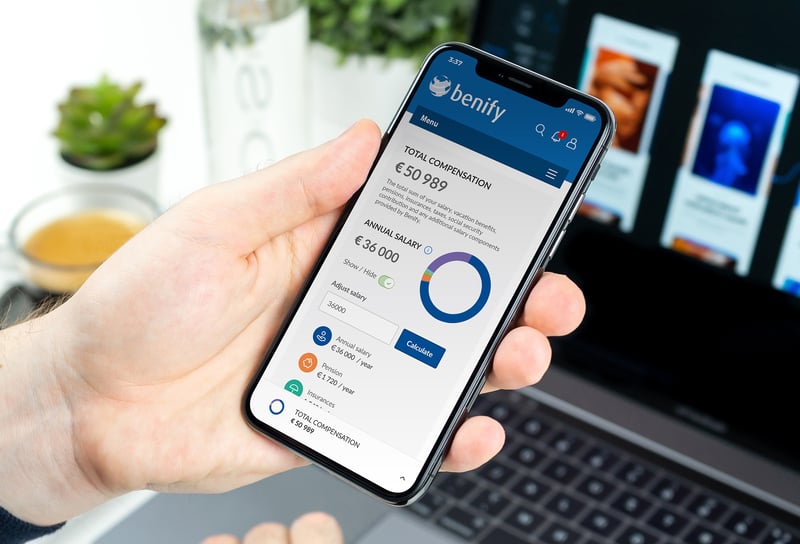Most companies today offer their employees access to a benefits platform of some sort where, among many things, they can enroll in benefits and get an overview of their total reward. After all, creating greater employee self-service has become increasingly important, especially with the introduction of hybrid working models.
Not only does employee self-service help reduce administration for HR, but it also gives employees 24/7 access to information about their employment, including their compensation and benefits. Ensuring employees are aware of and can access their total reward is smart business. In fact, employee total rewards can be a powerful strategy in both recruitment and retention.
For example, employers can present candidates with their full offer during recruitment, outlining all the different components that make up their total compensation package. Similarly, making sure current employees are aware of their employer’s full investment and their total compensation package is vital, especially when employees might be tempted by an offer elsewhere where the higher salary might be higher, but the overall total reward is less.
But just how current or accurate is the information when an employee views their total reward? Or more to the point, when and how often is an employee’s total reward updated? Well, that depends.
Total Reward - Dynamic vs. Static
Most employers present their employees with a total reward statement, which provides an illustrated breakdown of all the different components that make up their total compensation package, including benefits, insurances, bonuses, and other add-ons.
There are essentially two types of total reward statements – static and dynamic. Let’s look at the difference:
1. Static Total Rewards Statements
These are typically delivered once annually. In France, for example, A total reward statement - or bilan social individuel (BSI) as it is known locally - is much more static and information-based. This is due to legislation, whereby employers cannot offer their employees flexible benefits.
Instead, employees are given a breakdown of their compensation in the form of videos and information. For example, employees might receive information about how their charity money is distributed. These types of static total rewards statements are typically delivered once annually. However, more and more companies wish to deliver these more regularly.
A static TRS is essentially a document that employees can access via their benefits platform and then print as a PDF for reference. Updating and producing static total rewards statements is a manual task. Administrators use the data and information from the last 12 months to compile the statements.
2. Dynamic Total Rewards Statements
These are typically delivered monthly and are more interactive, providing employees with a more current picture than an annual statement.
An employer that offers less flexibility in terms of benefits might use a TRS to show candidates and current employees their full investment and the total value of one’s compensation package.
Alternatively, an employer that offers benefits with a lot of flexibility arrangements might use a TRS to showcase the value and taxable implications so that employees can see the value and amount they save.
Dynamic and Current Information
While both statement types are useful, Benify’s platform is designed to be dynamic, providing employees with up-to-date information about their compensation and benefits.
Here’s how it works: Benify’s platform receives information from integrated third-party systems periodically. When Benify receives information about changes to an employee’s total reward, it uses the information to produce a current, accurate, and dynamic total rewards experience.
Once the information has been received, the changes are visualized in the employee’s total reward. Employers can then send communications about updates about changes to employees. For example, using the Benify platform's integrated communication engine, messages can be sent, including push notifications to employees’ smartphones notifying them of new benefits that have been unlocked as a result of a change to their total reward. This way, employees get an accurate picture of their current total reward.
Just ask Standard Bank - the largest bank in Africa, with more than 44,000 employees in 22 countries. The company identified the need to implement a global benefits and total rewards platform to create greater employee access and awareness of their total reward. After conducting a global RFP, Standard Bank chose Benify.
“With Standard Bank being such a big corporate company, we have many perks and benefits for our employees, but there was never a central or single view where an employee could go in and view all of their benefits in real-time”, shares Jelica Nerahoo, HRIS Systems Specialist, at Standard Bank.
To learn more about total rewards, be sure to grab our free whitepaper.